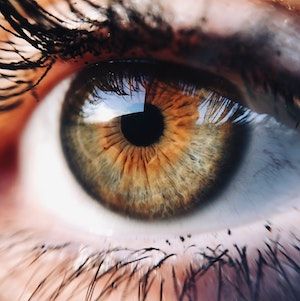Article
Less Visual Impairment From AMD Found in Population Study
Author(s):
Finnish population study attributes reduction in visual impairment from AMD to improved diagnostic tools, earlier diagnoses, and new therapies.

Visual impairment (VI) due to age-related macular degeneration (AMD) was found to have become less common in Finland over 4 decades, in a national population study which attributes the trend to improved diagnostic tools, earlier diagnoses, and new therapy options.
Petri Purola, MS, SILK, of the department of opthalmology and faculty of medicine and health technology at Tampere University in Finland, and colleagues found that there have been few studies which have evaluated the prevalence of AMD and its relation to visual impairment and new therapies.Those few, they noted, had the limitations of using single site populations, and/or were clinical trials with short follow-up periods, or had restricted the cohort to those with legal blindness due to AMD.
"Hence, there is a need for a comprehensive, population-based evaluation of trends in VI due ot AMD and the impact of new treatment options on the VI of AMD patients," Purola and colleagues wrote.
To fill in what they characterize as a "gap in knowledge", the investigators conducted a population study with over 30,000 visually impaired persons with AMD as the main diagnosis for visual impairment, drawn from the Finnish Register of visual impairment data from 1980 - 2019. The number of persons treated with intravitreal injections was obtained from hospital data at the Finnish Institute for Health and Welfare.
Purola and colleagues reported that although there had been a doubling of the incidence of reported visual impairment between the 1980s and the 2010s, the rate then plateaued, and has trended lower since 2012. The investigators also found a trend of decreasing severity of reported visual impairment over the studied time period; while that the mean age of onset had increased. The declining prevalence of visual impairment from AMD was apparent in all age groups except those 85 years and older; and the prognosis of VI had improved over the 4 decades.
"What was most remarkable, however, was the stagnation of the incidence and prevalence in the 2010s; in fact, even some decline was observed in younger age groups," Purola and colleagues remarked.
The prevalence of reported visual impairment was significantly higher in females than males, however, across decades and with age-adjustment. The investigators found no significant differences in visual impairment grades between sexes; and, after considering effect of longer life expectancy of females and looking for, but not finding undertreatment of exudative AMD among females, they concluded that females are at greater risk for visual impairment due to AMD.
Purola and colleagues attribute the overall favorable trend of reduced prevalence of visual impairment from AMD to several factors, including that the number of patients treated with intravitreal injections increased 40-fold during the period of 2005 - 2019.
"Today, we can say that exudative AMD treatment has been revolutionized by the introduction of intravitreal anti-VEGF drugs," Puola and colleagues enthused; but with a caveat. "Despite this development, undertreatment is frequent and the availability of treatment and protocols differs between clinics."
In addition to pharmacotherapeutic progress,the investigators cite other studies which have suggested that healthier lifestyles have contributed to the favorable trend. They also noted that many public campaigns have likely succeeded in making persons more aware of the symptoms, and prompted them to seek diagnosis and treatment.
Purola and colleagues pointed out that non-exudative AMD remains without effective treatment options, and is a significant cause for visual impairment in developed countries. "Therefore, it is important to evaluate the amount and burden of VI caused by the disease in order to improve health care and treatment," they concluded.
The study, "Visual impairment due to age-related macular degeneration during 40 years in Finland and the impact of novel therapies," was published online in Acta Ophthalmologica.





